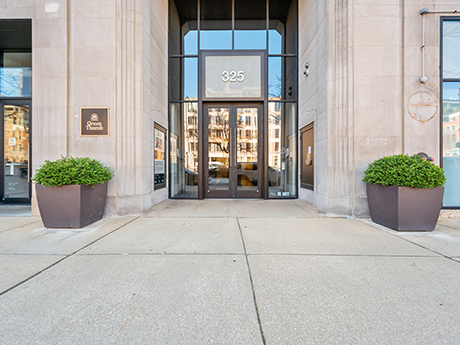By Nicole McAleese, Urban Innovations
As autumn arrives, Chicago’s commercial real estate market continues to evolve in response to changing workplace strategies and a growing return-to-office (RTO) movement. With major employers tightening in-office attendance policies, both landlords and tenants are adapting to new demands around space, flexibility and location.
Shift in tenant behavior
Over the past year, Chicago has seen a noticeable shift in how companies are approaching their office needs. Where many tenants once sought short-term lease extensions or downsized footprints during the height of hybrid experimentation, 2025 has brought renewed interest in long-term planning and, in some cases, expansion.

Several high-profile lease transactions underscore this trend. Stripe recently doubled its Chicago office space to 89,000 square feet, while law firm Arnold & Porter relocated from the Loop to a new 40,000-square-foot lease, according to Crain’s Chicago Business. While some firms continue to downsize or consolidate, there’s a clear cohort of companies reinvesting in physical office environments that support collaboration, talent attraction and cultural cohesion.
These trends mirror national patterns. According to CRE Daily, a growing number of U.S. employers are enforcing stricter in-office attendance, accelerating the shift away from a purely remote or hybrid-first mindset. The Archie RTO Tracker highlights companies like JPMorgan, Amazon and Meta as leaders in this return movement.
Flexibility, turnkey spaces
Across Chicago submarkets, from the Loop and West Loop to Fulton Market and the Near North Side, flexibility has emerged as a top tenant priority. Companies are not just seeking space: they’re seeking ready-to-use, experience-driven environments that align with the way teams work today.
Landlords are responding by rethinking how space is delivered. Move-in-ready suites with thoughtful layouts, high-end finishes and premium furnishings are increasingly replacing traditional shell or raw space. This strategy allows tenants to reduce upfront capital costs and speed up occupancy timelines.
Design-forward spec suites are also becoming a powerful leasing tool. Many landlords are collaborating with designers to deliver visually engaging spaces that help tenants quickly envision how a space can support productivity, brand expression and employee engagement. According to CBRE’s 2024 Office Occupier Sentiment Survey, the “flight to experience” is now a driving force in office decisions, often outweighing cost as the top priority.
Outlook: cautious optimism
While vacancy rates in some areas remain elevated, particularly in older Class B and C properties, demand is holding steady or growing in buildings that offer quality, location and flexibility. Newer Class A properties and recently modernized assets are capturing the lion’s share of leasing activity, while underperforming buildings are being repositioned or repurposed.
Submarkets like Fulton Market continue to attract attention from tech, life sciences and creative firms, while the Central Loop is seeing movement from legal, financial and professional services tenants looking to upgrade without leaving the core business district. Transit accessibility, wellness features and building amenities are playing a larger role in decision-making.
As companies continue to refine their in-office strategies, Chicago’s commercial real estate market appears positioned for a gradual but steady recovery. Landlords who embrace flexibility, experiential design and proactive tenant engagement will be best equipped to thrive in this evolving landscape.
Nicole McAleese is leasing associate with Urban Innovations. This article originally appeared in the October 2025 issue of Heartland Real Estate Business magazine.


